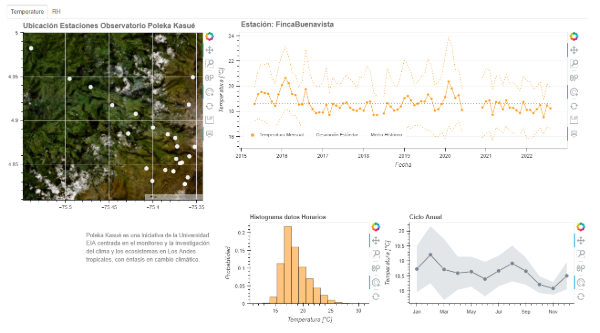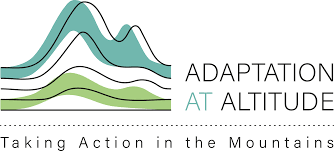Universidad EIA (Colombia)
Studies suggest that enhanced warming with elevation (so-called Elevation Dependant Warming; EDW) is occurring in the central and southern tropical Andes. However, for the northern portion of the Andes, across Colombia and Venezuela, there are no sufficient scientific studies exploring this climate change signature. The interplay of various potential drivers is highly complex, being characterised by non-linear dynamics and self-reinforcing feedback mechanisms. These processes and their concomitant impacts therefore require further investigation. This is especially so given the hydrological importance of the northern Andes (contributing to the water supply of tens of millions of inhabitants), limited understanding of the role of mountain glaciers, high-altitude water bodies, páramo environments, and high-Andean forests on the overall hydrology of mountain watersheds, and an apparent tendency towards stronger hydrological extremes in the region (droughts, extreme rainfall).
The Poleka Kasue Mountain Observatory, which spans an elevational gradient of almost 3,000 m in the Claro River basin, represents a unique, interdisciplinary observational network. 28 sensors (with data loggers) measuring air temperature and relative humidity are distributed with elevation intervals of approximately 300 m. Some sensors now have records exceeding 25 years. In this project, A 5-day field trip to the observatory was conducted in late September 2023 to retrieve hourly data from many of the loggers, and to replace the equipment where necessary. Temperature variability and other patterns were analysed statistically, and comparisons were made with ERA-5 data. A clear tendency towards more rapid warming with elevation was found. Analysis according to the phase of the El Niño-Southern Oscillation (ENSO) revealed clear influence, with higher mean temperatures during El Niño years. Tri-linearly estimated ERA-5 temperatures consistently represent the in-land data captured by the datalogger at Salto de la Cueva. Nevertheless, ERA-5 shows a systematic overestimation of minimum temperatures and an underestimation of maximum temperatures at daily resolution.
Main outputs:
A website for the observatory has been developed, which contains a tool to view and download monthly data. A scientific paper is currently in preparation, and this page will be updated to include the relevant link, once available. Daily data will be released alongside the paper. Hourly data may be available via written request to the project team, pending an agreement being reached.
The resources generated by the project will be included in the next version of the GEO Mountains General Inventory, with the monitoring stations included in the In Situ Inventory (if not already).
Contact: Prof. Enrique Ángel-Sanint, Universidad EIA: enrique.angel [at] eia.edu.co
Image from https://www.eia.edu.co/poleka-kasue/








